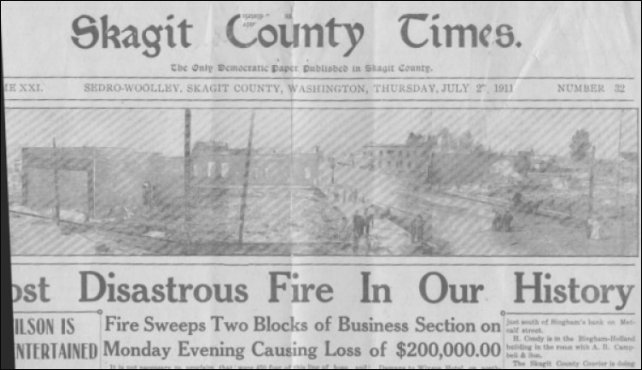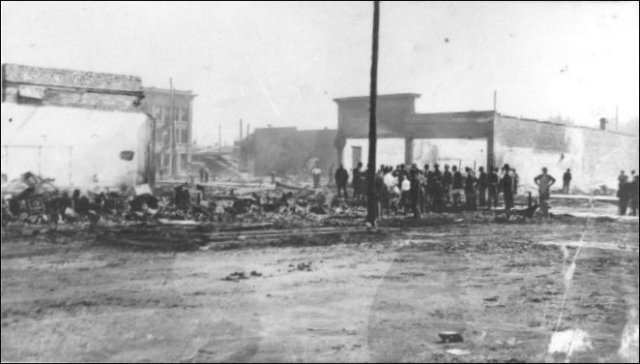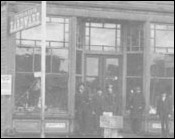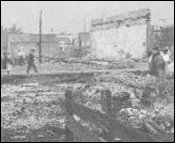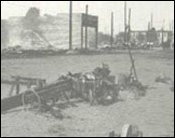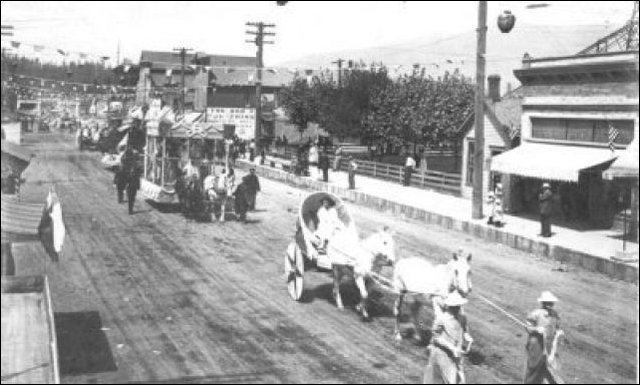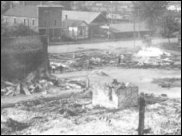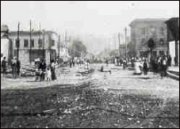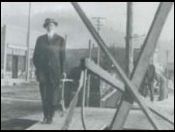Far left: Here is where it all started. The Fritsch Bros. Hardware store, at the northwest corner of Metcalf and Woodworth streets, where the florist shop now stands. At the far left, just out of the photo, was the oil shed on the alley where a barrel caught fire and the fire began that morning. This photo was taken sometime in the 1890s. In January 1893, brothers Joe Fritsch and Frank Fritsch Jr. bought the store of Herman Waltz, who was the hardware man in old Sedro and apparently moved up to P.A. Woolley's company town sometime in the very early 1890s. We know that the brothers erected a new building in 1897, which could be the one in the photo. The Fritsch family, headed by Frank Sr., moved to the Sauk river from Texas in the mid-1880s after originally immigrating from Germany. Frank Sr. was a longtime businessman in Burlington..
Center: This view is southeast from about where the service station is by the railroad tracks on Ferry. The photographer was probably standing just outside the Vendome hotel, which stood at that location and was spared from the fire. It was built in the mid-1890s as the Royal Hotel by Charles Villeneuve Sr., whose son, Charles Jr., would become famous as the marshal during the famous 1914 bank robbery in Woolley. It was sold in September 1903 to Frank Bergeron, a hotel- and saloon-owner from Clear Lake, who renamed it.
Right: This photo looks west on Ferry street and shows debris as well as equipment, with hulks of buildings in the background. At the rear left, you can see the back of the Condy building, which survived because of its firewalls and still stands today with the Condy clock in front of it. The door on the alley leads to the backroom where the Skagit County Courier newspaper was launched in 1901 and was still there when the fire occurred. In the rear center, you can see the firewall of the Herron building, which was about where attorney Bill McCann's office is today, across from the Gateway. At the rear right, you can just barely see the Vendome Hotel, which survived the fire because the wind was blowing from a southwesterly direction.
|

 810 Central Ave.,
810 Central Ave., 